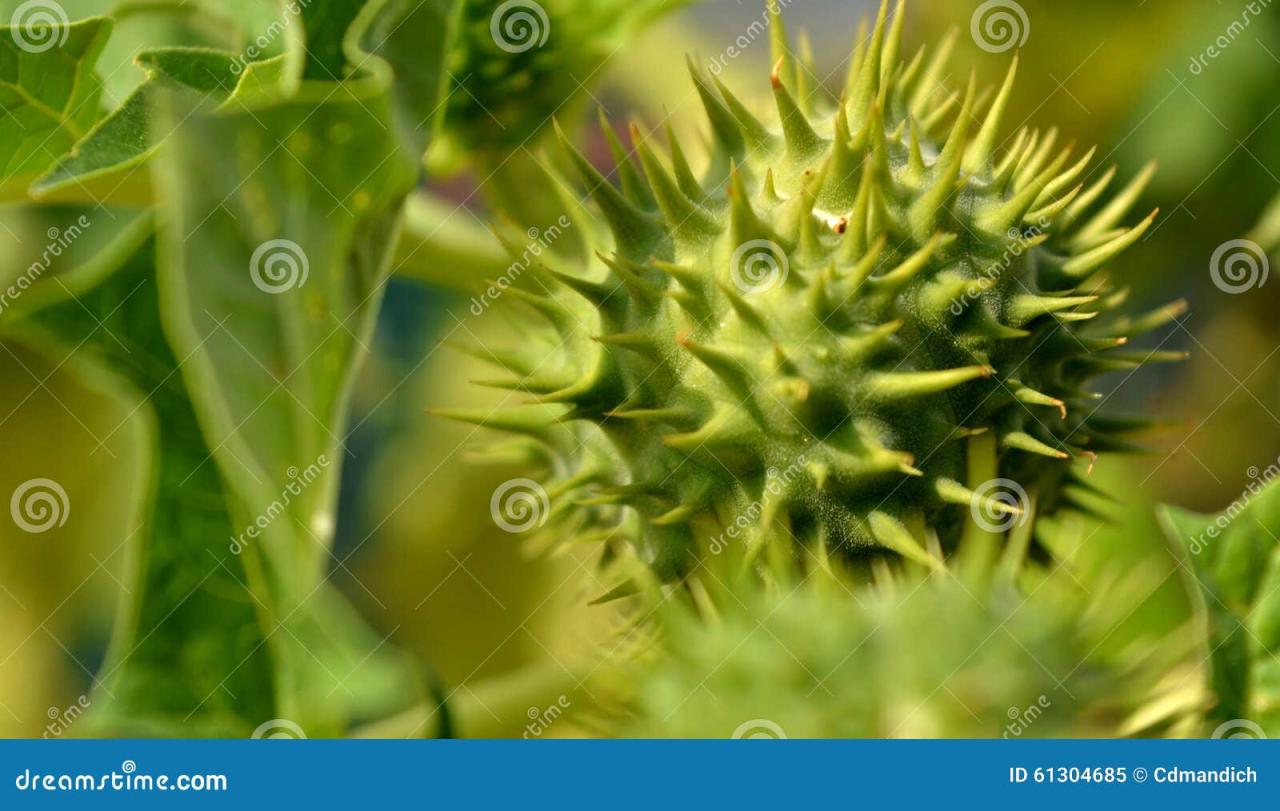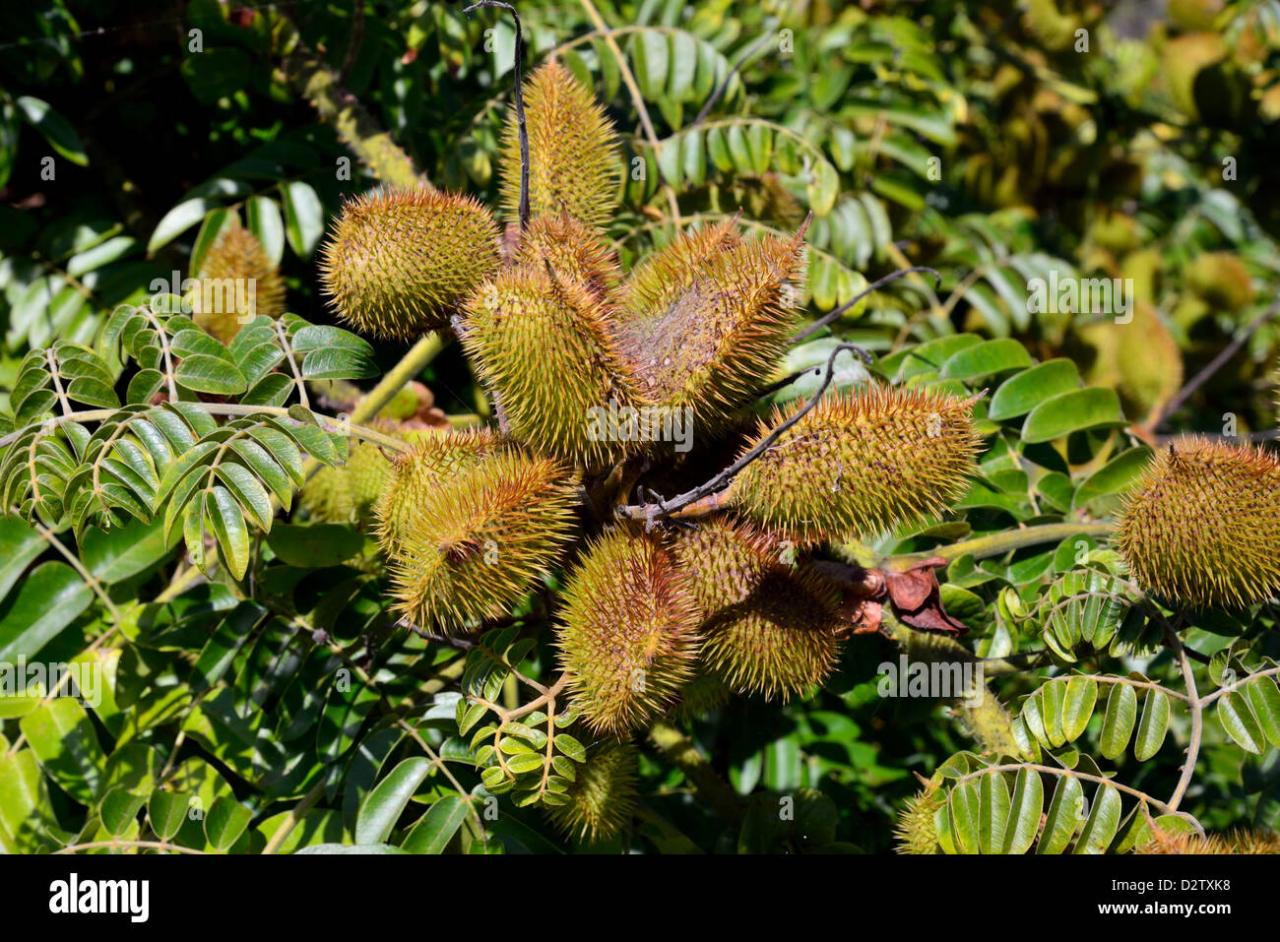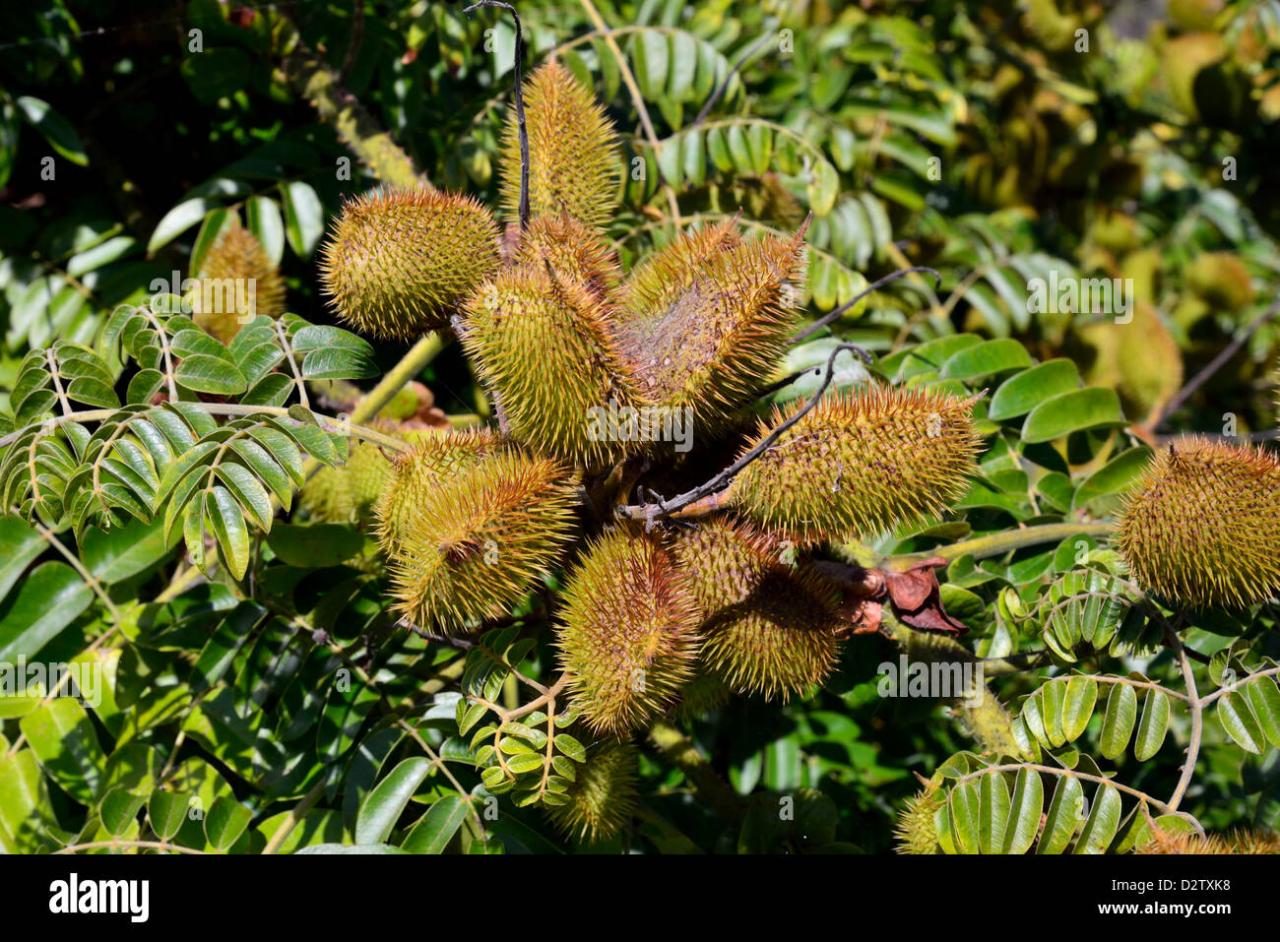How Spiky Seeds Are Designed for Protection and Propagation, a seemingly simple design, reveals a complex interplay of evolutionary forces. Nature has crafted these spiky marvels to serve a dual purpose: safeguarding their precious contents and ensuring the perpetuation of their species.
From deterring hungry herbivores to facilitating dispersal by wind and animals, the spiky seed’s unique structure reflects a remarkable adaptation to the challenges of survival.
These sharp, often prickly exteriors are not mere aesthetic quirks. They represent a testament to the ingenuity of nature, showcasing the intricate relationship between plants and their environment. As we delve into the fascinating world of spiky seeds, we uncover the remarkable strategies they employ for protection, propagation, and the preservation of their genetic legacy.
The Role of Spikes in Seed Protection
Spiky seeds are a fascinating example of how plants have evolved to protect themselves and ensure the survival of their offspring. These sharp, pointed structures serve as a crucial defense mechanism against a variety of threats, particularly herbivores and seed predators.
The physical properties of these spikes, coupled with their strategic placement, play a significant role in deterring these adversaries and safeguarding the precious seeds within.
The Effectiveness of Spikes in Detering Herbivores and Seed Predators
The presence of spikes on seeds acts as a deterrent to herbivores and seed predators, discouraging them from consuming the seeds. The sharp points and rigid structure of the spikes make it difficult and painful for animals to ingest the seeds, effectively protecting them from being eaten.
These spikes are often positioned in a way that makes it difficult for animals to grasp or manipulate the seeds, further hindering their ability to consume them.
The spiky nature of some seeds is a fascinating example of how plants have evolved to protect themselves and ensure their propagation. These spikes, often called barbs or awns, can help the seeds attach to animals, facilitating dispersal to new locations.
This is a strategy shared by many plant species, including the African violet, which has its own unique methods of propagation. Discover the secrets behind African violet propagation in this insightful article: Secrets of African Violet Propagation Finally Revealed!.
Understanding these strategies, from spiky seeds to leaf cuttings, helps us appreciate the diversity and ingenuity of the plant world.
Physical Properties of Spikes that Contribute to Their Protective Function
The effectiveness of spiky seeds in deterring herbivores and seed predators can be attributed to several physical properties:
- Sharpness:The sharp points of the spikes are designed to inflict pain upon animals that attempt to consume the seeds. This pain serves as a strong deterrent, discouraging them from targeting the seeds in the future.
- Rigidity:The spikes are often made of tough, rigid materials that are difficult to break or bend. This rigidity prevents animals from easily crushing or chewing the seeds, further enhancing their protective function.
- Placement:The placement of the spikes is also crucial to their effectiveness. They are often positioned around the perimeter of the seed, making it difficult for animals to grasp or manipulate the seeds. This strategic placement makes the seeds less palatable and more challenging to consume.
Examples of Plants with Spiky Seeds and the Specific Threats They Face
Many plants have evolved spiky seeds to protect themselves from specific threats. Here are a few examples:
- Cocklebur (Xanthium strumarium): This plant produces seeds with sharp, barbed spikes that attach themselves to animal fur or clothing. This helps the seeds disperse over long distances, but also serves as a defense mechanism against herbivores who might try to consume them.
- Burdock (Arctium lappa): Burdock seeds have hooks that cling to animal fur or clothing, similar to cocklebur. These hooks are effective at deterring seed predators and promoting seed dispersal.
- Hedgehog Cactus (Echinocereus engelmannii): This cactus produces seeds with sharp spines that protect them from being eaten by rodents and other small animals. The spines also help to reduce water loss and protect the cactus from extreme temperatures.
Seed Dispersal Mechanisms of Spiky Seeds
Spiky seeds have evolved a range of ingenious dispersal mechanisms that rely on their unique morphology. These spikes, far from being mere defensive features, play a crucial role in facilitating seed dispersal, ensuring the survival and propagation of the plant species.
Seed Dispersal by Animals
Spiky seeds are often dispersed by animals, utilizing the spikes as a means of attachment. This dispersal strategy is particularly effective in environments where wind dispersal is limited or unreliable. The spikes act as hooks or barbs, enabling the seeds to cling to the fur or feathers of passing animals.
As the animal moves, the seeds are transported away from the parent plant, potentially to new locations suitable for germination.
Spiky seeds have evolved to be dispersed by animals, often utilizing the spikes as a means of attachment.
- Burdock (Arctium lappa): This common weed possesses seeds with numerous hooked spines that readily attach to animal fur, allowing for long-distance dispersal.
- Cocklebur (Xanthium strumarium): The seeds of this plant have sharp, barbed spines that can penetrate animal skin, ensuring the seeds are carried away and dispersed over a wide area.
Wind Dispersal of Spiky Seeds
While wind dispersal is more commonly associated with lightweight seeds, some spiky seeds have adapted to utilize this method. These adaptations typically involve the presence of wings or parachutes, which increase the surface area of the seed and allow it to be carried by the wind.
Nature’s ingenuity is evident in the spiky seeds of certain plants, which serve as both a defense mechanism and a clever means of propagation. These prickly exteriors deter herbivores from consuming them, ensuring the seed’s survival. For instance, the biota herb, a natural elixir renowned for its medicinal properties, Biota Herb: The All-Natural Elixir You Need to Try , is a prime example of how nature’s defenses can be harnessed for human benefit.
The spiky seed’s design also aids in its dispersal, allowing it to hitch a ride on animal fur or wind currents, spreading the plant to new territories.
- Dandelion (Taraxacum officinale): Dandelion seeds possess a parachute-like structure called a pappus, which allows them to be carried by the wind for considerable distances.
- Maple (Acer): Maple seeds have distinctive wings that facilitate wind dispersal, enabling them to travel further from the parent tree.
Comparison of Dispersal Strategies
Spiky seeds, through their specialized morphology, exhibit distinct dispersal strategies compared to smooth seeds. Smooth seeds often rely on wind dispersal, relying on their lightweight nature and small size to be carried by the wind. However, their dispersal range is often limited, and they are more susceptible to predation or unfavorable conditions.
- Smooth seeds:Typically dispersed by wind, with a limited dispersal range. They are often small and lightweight, and rely on favorable wind conditions for successful dispersal.
- Spiky seeds:Employ a diverse range of dispersal strategies, including animal dispersal and wind dispersal. They are often larger and heavier, but their spikes allow them to overcome these limitations and achieve greater dispersal distances.
The Evolution of Spiky Seeds: How Spiky Seeds Are Designed For Protection And Propagation

The evolution of spiky seeds is a testament to the power of natural selection, where adaptations that enhance survival and propagation are favored over time. These spiky structures, far from being mere aesthetic features, play a crucial role in protecting seeds from predators and facilitating dispersal, ultimately ensuring the continuation of the plant species.
The Evolutionary Pressures Behind Spiky Seeds
The development of spiky seeds is driven by a complex interplay of evolutionary pressures, primarily focusing on seed protection and dispersal.
- Protection from Herbivores:Spikes act as a deterrent to herbivores, preventing them from consuming the seeds. This is particularly important for plants that produce seeds that are nutritious and palatable to animals. For example, the spiky seed pods of the prickly pear cactus ( Opuntiaspecies) effectively deter herbivores from consuming the seeds, allowing them to germinate and establish new plants.
- Protection from Seed Predators:Spikes can also protect seeds from insects and other small animals that might try to feed on them. For example, the spiky seeds of the cocklebur ( Xanthium strumarium) are difficult for small rodents to crack open, ensuring the survival of the seeds.
- Seed Dispersal:Spiky seeds can facilitate dispersal by attaching themselves to animals’ fur or clothing. This mechanism, known as epizoochory, allows seeds to travel long distances and colonize new areas. For example, the spiky seeds of the burdock ( Arctiumspecies) have hooks that readily attach to animal fur, effectively spreading the seeds over vast distances.
The Genetic Basis of Spike Formation
The development of spiky structures in seeds is influenced by complex genetic pathways. These pathways involve the interplay of various genes, including those responsible for cell wall formation, cell shape, and the production of structural proteins.
- Genes Involved in Cell Wall Formation:Genes responsible for the synthesis and modification of cell wall components, such as cellulose and lignin, play a crucial role in the development of spiky structures. For example, mutations in genes involved in cellulose biosynthesis can lead to the formation of abnormal cell walls, which can contribute to the development of spiky seeds.
- Genes Involved in Cell Shape:Genes that regulate cell shape and growth patterns are also essential for the development of spiky seeds. These genes can influence the elongation and orientation of cells, leading to the formation of pointed structures.
- Genes Involved in Structural Protein Production:Genes responsible for the production of structural proteins, such as those found in the cell walls, can also contribute to the development of spiky seeds. These proteins provide strength and rigidity to the structures, making them more resistant to damage.
Diversity of Spiky Seed Structures
Spiky seeds exhibit a remarkable diversity in form and function, reflecting the diverse evolutionary pressures faced by different plant species.
Plant Species |
Seed Structure |
Dispersal Mechanism |
|---|---|---|
Cocklebur (Xanthium strumarium) |
Two spiky burs, each containing a single seed |
Epizoochory (attaching to animal fur) |
Burdock (Arctium species) |
Numerous hooks on the seed head |
Epizoochory (attaching to animal fur) |
Prickly Pear Cactus (Opuntia species) |
Spiky seed pods |
Ingestion and dispersal by animals |
Sandbur (Cenchrus species) |
Spiky burs with multiple seeds |
Epizoochory (attaching to animal fur) |
Beggar’s Ticks (Bidens species) |
Spiky seed heads with barbed bristles |
Epizoochory (attaching to animal fur) |
The Importance of Spiky Seeds in Ecosystems
Spiky seeds play a crucial role in maintaining the balance and diversity of ecosystems. Their unique design and dispersal mechanisms contribute significantly to the dynamics of plant populations and the overall health of the environment.
The Ecological Roles of Spiky Seeds in Maintaining Biodiversity, How Spiky Seeds Are Designed for Protection and Propagation
Spiky seeds contribute to biodiversity in several ways:
- Seed Dispersal:Spiky seeds, with their ability to attach to animal fur or clothing, promote long-distance dispersal. This reduces competition among seedlings for resources and allows plants to colonize new areas, leading to increased genetic diversity within plant populations.
- Habitat Colonization:By dispersing to new locations, spiky seeds can colonize previously unoccupied areas, contributing to the establishment of new plant communities and increasing habitat diversity.
- Predator Avoidance:The spiky structure of these seeds can deter seed predators like birds and rodents, protecting the seeds from being consumed and allowing them to germinate and establish new plants.
Impact of Seed Dispersal on Plant Population Dynamics
Seed dispersal, facilitated by spiky seeds, has a profound impact on plant population dynamics:
- Population Growth:By spreading seeds over wider areas, spiky seeds reduce the risk of localized extinction due to environmental disturbances or disease outbreaks. This contributes to the overall stability and growth of plant populations.
- Genetic Diversity:Dispersal promotes gene flow between populations, leading to increased genetic diversity and adaptability to changing environmental conditions. This allows plant populations to evolve and survive in the face of challenges.
- Spatial Structure:The dispersal patterns of spiky seeds influence the spatial distribution of plant populations, contributing to the overall structure and complexity of plant communities.
The Role of Spiky Seeds in Preventing Invasive Species
Spiky seeds can play a role in preventing the spread of invasive species:
- Limited Dispersal:Some spiky seeds have limited dispersal capabilities, preventing them from spreading rapidly and becoming invasive in new environments. This is particularly true for species with seeds that are easily dispersed by wind or water.
- Predator Resistance:The spiky structure of seeds can deter native predators from consuming them, reducing the chances of the seeds being transported to new areas and becoming invasive.
Final Summary

The evolution of spiky seeds serves as a compelling example of how nature’s solutions often lie in the most unexpected places. These seemingly simple structures hold a complex story of adaptation, survival, and ecological balance. Understanding the intricate mechanisms behind spiky seeds not only expands our knowledge of the natural world but also highlights the importance of preserving biodiversity, ensuring that these remarkable adaptations continue to thrive for generations to come.
Quick FAQs
What are the advantages of spiky seeds for plants?
Spiky seeds offer several advantages for plants, including protection from herbivores and seed predators, enhanced dispersal through wind or animals, and reduced competition with parent plants.
Are all spiky seeds designed for the same purpose?
While many spiky seeds serve both protection and dispersal functions, there are variations. Some species may prioritize protection, while others may rely heavily on dispersal mechanisms.
How do spiky seeds contribute to biodiversity?
Spiky seeds play a crucial role in maintaining biodiversity by facilitating successful seed dispersal, establishing new populations, and preventing invasive species from dominating ecosystems.
